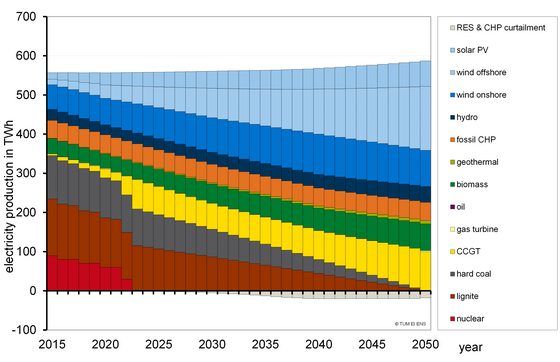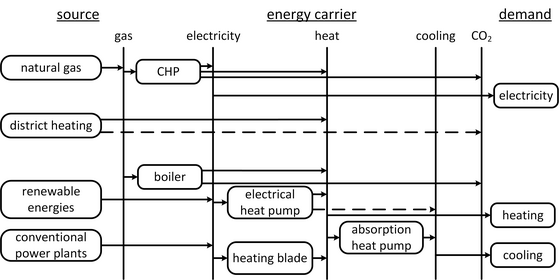Application of energy system models
The design of the future energy system and the related issues are in an increasing spotlight of public attention. Various aspects need to be considered and analyzed, such as
- the liberalization of markets,
- the scarcity of resources,
- desired and agreed climate change targets and
- consequently an increasing share of renewable energies and their integration in the energy systems of many countries.
As the effects of changes cannot be simulated in laboratory scale or even tested in real power systems, analyses must be carried out with the help of energy models. Thus, mapping of new technologies and regulatory framework for long periods is possible. This allows the investigation of different development paths and the underlying cause-and-effect relations.
Depending on the statement to be made the energy system must be built as optimization or simulation model. Using an optimization model, an objective function is optimized underlying appropriate conditions for the entire system. For statements about technical relationships an optimization approach is more suitable. In a simulation, however, the parties to the system are shown with their respective individual interests and where appropriate with various levels of information. By varying the frame conditions the quality of measures to achieve defined objectives can be investigated in a simulation.
At the Chair of Renewable and Sustainable Energy Systems, energy models are currently being both applied and developed to the following subjects:
- Power system
- power plant expansion and dispatch
- network expansion and load flow optimization
- bulk storage expansion and dispatch
- load management
- Heat system
- expansion of district heating
- provision of heat (conventional, thermal power, CHP)
- Sector coupling between electricity, heat and mobility
The viewing area of the above models extends from individual buildings and residential structures up to transnational areas.
Depending on the problem, different methods such as linear programming, mixed integer linear programming or decomposition methods are applied.
The results are diverse. They range from different expansion scenarios of power plants over the use of energy sources and optimal expansion of electricity and heat supply networks to flexibility measures in demand.

